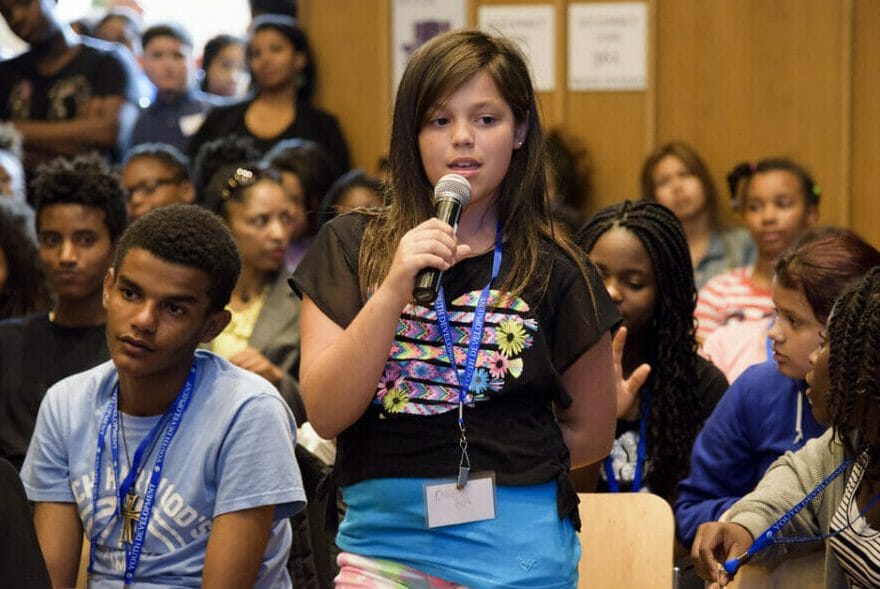
Sometimes, kids’ worst obstacles are their own parents’ misconceptions about kids’ learning and success. As a teacher, I have seen many kids struggle on a daily basis to meet the extremely high and unrealistic expectations their parents set for them. These high expectations for children usually go hand in hand with expectations parents set for themselves.
Such extreme standards bring pressure, tension, pain, depression and a great feeling of inadequacy, both for the parents, and the child. Unfortunately, children carry this feeling with them into adulthood, and raise their own kids using the same misconceptions.
Here are some common myths I have heard over the years, about what will bring success and facilitate kids’ learning.
Myth #1: Kids’ learning is improved by pain and punishment
It is true that humans over time have learned through cause and effect. They improve and evolve by seeing the consequences of their actions.
However, using punishment as a teaching tool does not make children learn what you think (not even if you call it “consequences”). They learn to be afraid and to avoid the punishment. The lesson you were trying to teach them is completely lost. This is because the need to avoid pain is stronger than almost anything and they will do whatever they can to avoid it.
The more painful the punishment, the less they will learn of what you are actually trying to teach them.
This myth was born many years ago, in ancient times, when kids were an extension of their parents. In a world where kids were required to be obedient and serve the adults around them, this sort of approach was very popular. Today, we know kids learn 10 times better from joy, fun, compliments, encouragement and support than they do from pain.
Myth #2: Creativity cannot be learned
Most people think creativity is inherited. You are either born with it or not. I am happy to tell you that if you thought that, you would be wrong. Creativity can be learned (and quite easily too!).
Researchers have found that the area of the brain that is responsible for creativity requires flexible shifting from one hemisphere to the other. Unfortunately, nowadays, we do not reward kids for thinking differently. We promote rational thinking and less imagination. As a result, the brain’s ability to shift from one hemisphere to the other declines.
Creativity is the ability to come up with things that are different from the ordinary. It is thinking outside the box. However, to ignite creativity, you need to be in the box, you need to see its edges or see what lies behind it. Learning in creative ways can help develop creative learners. Various educational methods promote creativity in children. The earlier you start teaching it, the easier it is to develop.
Myth #3: A bit of pressure is healthy
Pressure is not healthy. Unless we are in a dangerous situation. Then we need our fight or flight mode to kick in and defend us from the danger – the lions and snakes and modern threats. Our body instinctively tries to save us to make sure we survive, so pressure turns on the fight or flight mode. In that situation, health is luxury.
Stress and pressure are not helpful to kids’ learning (or anybody else’s). They make us impulsive and unable to problem solve. They make it harder to be calculated and make sense of situations.
Myth #4: Pressure turns on creativity
Pressure is not healthy for kids’ creativity any more than it is for kids’ learning. As soon as pressure starts, we hit survival mode – we can’t think, we can’t be calculated, we can’t analyze and we can’t be creative.
The brain is only focused on survival. Creativity is a luxury we cannot afford when there is a lion around. As a parents, if you put pressure on your kids or students, you become the lion.
Myth #5: Multi tasking is the only way to survive in the world

When we shift from one cognitive function to another, there is a loss of information. This interferes with our ability to keep focusing. Researchers say that the time it takes to shift from one mental process to another increases the length of time it takes to do the activity by 25%.
This means if you did each activity one at a time, they would take you 1 hour each. If you did them all at the same time, it would take you 1 hour and 15 minutes to do each activity.
The moral of the story is that you cannot expect kids to multi task and focus at the same time. It’s just not possible.
Myth #6: If kids are not performing well, they just need to do it over and over again, without rest until they master it.
While in some cases “practice makes perfect”, in other situations, repetition does nothing at all (and sometimes does quite the opposite). The brain needs time to digest and absorb the information you give it. Without that, repetition is pointless.
This is a mistake many grownups make. They think saying things to kids is enough for them to learn. So they say things again and again, trying to drill the information into them by doing the same activity, expecting children to learn by sheer repetition.
These parents are forgetting three very important aspects of kids’ learning.
- There is a different between input and process. When you teach, you give input. Learning happens through process, not input. You have to allow kids the time and space to process the information you gave them without interruptions.
- There are different kinds of brains and people process knowledge/information differently. If you insist on giving them only one kind of input (for example, in the way that suits you), you narrow their processing options. When you teach something to a kid (input), you need to learn how they think. You can then present the information in a way that takes advantage of their processing capacity. When in doubt, take a holistic approach – teach it in a few different ways (for example, visual, auditory, kinesthetic). That way, you are more likely to hit the right thinking style.
- Most of kids’ learning happens in the space and time between inputs, while kids are doing other things that do not require cognitive energy. When I taught my 3 year old students a very sophisticated concept, I used to send them off to play and check what they remembered an hour later. The brain found out a way accommodate the challenge while they were doing other things in the playground.
Myth #7: School is not for fun

If your kids love going to school, they will benefit greatly. If they hate it, they will have a much harder time, even if they get A for all of their subjects.
The joy of learning is like a compass pointing to the success of kids’ learning. When we enjoy what we do, our brains are working at full capacity. They can process things better and learn more.
Myth #8: My children have all the information they need on the Internet
The internet is full of knowledge, but knowledge is not all that we need in life. In our generation, kids can find an overwhelming amount of information on the internet that they can’t sift through. It confuses them more than most adults think. It also prevents them from practicing other very important skills, like social skills.
A school environment give them plenty of opportunities for this, and most importantly, it teaches them how to learn. So, the internet is full of great things that can help our kids a lot but it does not everything.
If you want to raise successful kids, make sure you get rid of these beliefs about kids’ learning and success. Over the past few years, through research and enormous amounts of trial and error, they have all been busted.
Happy parenting,
Ronit











